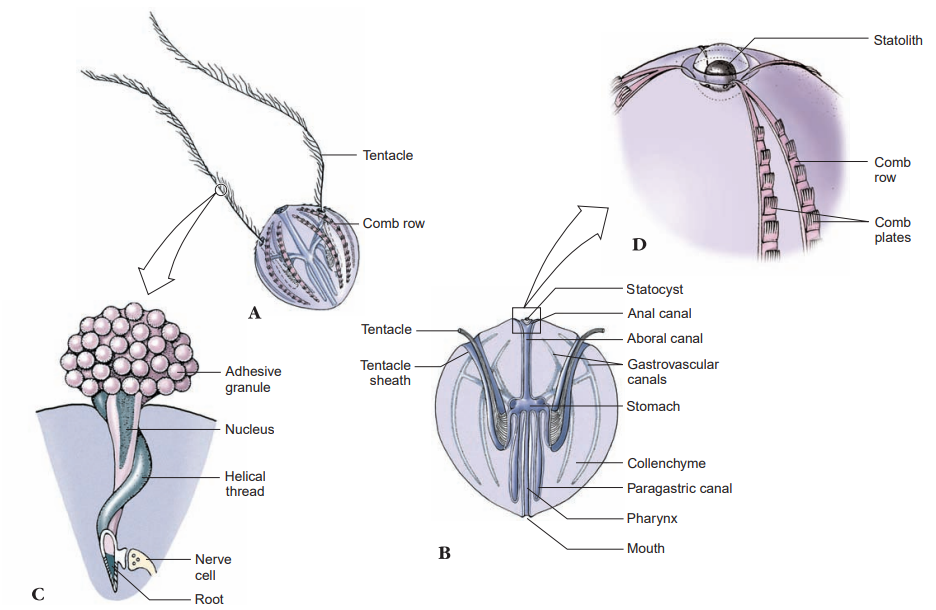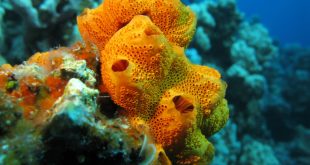Pleurobrachia (Gr. pleuron, side, + L. brachia, arms) is about 1.5 to 2 cm in diameter. The oral pole bears the mouth opening, and the aboral pole has a sensory organ, the statocyst.
Comb Plates
On the surface are eight equally spaced bands called comb rows, which extend as meridians from the aboral pole and end before reaching the oral pole. Each band consists of transverse plates of long fused cilia called comb plates. Ctenophores are propelled by beating of cilia on the comb plates. The beat in each row starts at the aboral end and proceeds successively along the combs to the oral end. All eight rows normally beat in unison. The animal is thus driven forward with the mouth in advance. The animal can swim backward by reversing the direction of the wave.
Tentacles
The two tentacles are long, solid and very extensible, and they can be retracted into a pair of tentacle sheaths. When completely extended, they may measure 15 cm in length. The surface of the tentacles bears colloblasts, or glue cells, which secrete a sticky substance for catching and holding small animals.

Body Wall
The cellular layers of ctenophores are generally similar to those of cnidarians. Between the epidermis and gastrodermis is a gelatinous collenchyme that fills most of the interior of the body and contains muscle cells and ameboid cells. Muscle cells are distinct and are not contractile portions of epitheliomuscular cells (in contrast to Cnidaria).
Digestive System and Feeding
The gastrovascular system comprises a mouth, a pharynx, a stomach, and a system of gastrovascular canals that branch through the jelly to extend to the comb plates, tentacular sheaths.
 EazyBio: Educate, Elevate, Empower EazyBio: Educate, Elevate, Empower
EazyBio: Educate, Elevate, Empower EazyBio: Educate, Elevate, Empower




